Paul Elio Responds to Skeptics

The Elio Motors project continues to generate skepticism. The latest is a post by Tavarish at Jalopnik’s CarBuying Kinja subsite giving us a half dozen reasons while the high mpg reverse trike will never come to be, Six Things That Could Kill Elio Motors Before It Even Launches. Tavarish isn’t the only skeptic. The consensus among automotive writers seems to be highly critical. While I enjoy being a contrarian and going against the stream I still don’t want to be a cheerleader for Paul Elio and his team, but I have to confess that there’s romance in the idea of someone starting their own car company. I also think that there is no reason short of raising enough money why they can’t put the car into production and meet their performance and safety specifications. I’m not so sure about Elio Motors meeting their $6,800 price point but I still don’t think the latest criticism is completely fair.
First, I’m not naive. I recognize that the people at Elio have gone out of their way to cultivate good relations with this site and with me personally. A major reason for that is that unlike most of the skeptics, I’ve actually spoken with executives at Elio, including their head of manufacturing, their director of sales and Paul Elio himself. I’ve also corresponded directly with Stuart Lichter, a company backer who’s the middleman in the real estate deal for the former GM assembly plant in Shreveport, Louisiana. Everyone involved with the company has always answered all of my questions directly, with no evasions. Everything has been transparent, from my perspective at least.
A few weeks ago Elio’s PR guy contacted me with what he hyped as important news, the fact that Comau, the company that is supplying Elio with automation services at the Shreveport plant, will start selling off surplus machinery and equipment in the factory that wont be needed by Elio. I had a couple of questions about the financing of the equipment purchase and their rep gave me Paul Elio’s phone number, but the story didn’t really seem important enough to be of interest to our readers and I’m not simply going to run a press releasey post, so I didn’t call him at the time.
Since I do have a stake, as a writer, in the Elio story, I read Tavarish’s post with interest and I was disappointed that like many of the skeptics, he made a lot of speculation without checking either with the company or their suppliers. Having Mr. Elio’s number in my email in box, I texted him and asked when it would be a convenient time to call if he wanted to respond to the criticisms raised in the Jalopnik post. He called me and he answered the questions raised by Tavarish pretty much point by point.
Point one was that the Elio three wheeler is not a car, that legally it’s a motorcycle and that motorcycle helmet and licensing laws will hinder consumer acceptance. The Elio’s legal status as a motorcycle also means that it does not have to meet Federal Motor Vehicle Safety Standards, including passing crash testing, that automobiles and light trucks have to achieve. I didn’t ask Elio about the motorcycle laws that will affect drivers because the vehicle is what it is. The vast majority of states won’t require Elio drivers to wear helmets and 45 of 50 won’t require them for drivers over the age of 21. Forty five? That number sounds familiar. Oh, right, that’s the number of states where Tesla sells cars. If that’s enough Americans to launch a relatively niche luxury vehicle, it’s probably enough to launch something economical. We’ll return to Tesla later.
As for the car’s safety, Elio has claimed that it will meet NHTSA’s “five star” crash worthiness standards. Tavarish is skeptical because motorcycles don’t even have to be crash tested. In my most recent post on the Elio three wheeler, when I got to drive the prototype, something almost none of the skeptics have done, I asked Paul Elio about crash testing and he said that it was possible, perhaps likely, that because of the vehicle’s status as a motorcycle that NHTSA won’t crash test it. He said that if that transpires, the company will have private firm put the trike through identical testing and that they will publish the results.
Tavarish’s second point also has to do with the fact that it’s a motorcycle. Elio Motors has been promoting their vehicle as environmentally friendly, based on it’s projected 84 mpg on the highway. Tavarish points out that Elio doesn’t talk much about the emissions side of being green and he’s skeptical of Elio’s claims that the vehicle will pass California’s stringent pollution testing, figuring that motorcycles have to meet their own standards in California, that Elio will use that loophole to avoid equipping their trike with “all that messy and expensive emissions equipment, like evaporative emissions canisters, exhaust gas recirculation, and even the staple of cleaner air technology in cars – the catalytic converter.”
Paul Elio told me that Johnson Matthey, who supply about a third of the catalytic converters currently being installed by auto manufacturers worldwide, will be supplying them with the catalytic part of the pollution control device. Eastern Catalytic will be “canning” the converter and supplying the rest of the vehicle’s exhaust system. The Elio 0.9 liter three cylinder, designed by IAV, will feature EGR and variable valve timing as part of its emissions package. The fuel tank, fuel pressure lines, and returns will be supplied by ABC Fuel Systems will be compliant with automotive standards for evaporative emissions.
Tavarish makes much about the fact that that pollution equipment is proposed for an engine that does not yet exist. All of the prototypes so far have used the Suzuki triples out of Geo Metros. In August, when I last spoke with Paul Elio, he told me that the major engine components for the first prototype had been cast and that it would take a couple of months to get all the parts in and everything machined before they’d be able to put it together. According to Elio, he current status of the prototype engine is that it’s been assembled and spun without power to make sure there are no interferences. It was then torn down and it is currently being reassembled in a more laborious process that involves checking all tolerances, torques etc. The target date for dyno testing is November 15th. Elio told me that assuming they meet power and torque specs they will run the engine to failure. Following that, 25 validation examples of the engine will be built for pre-production pilot vehicles, some of which will be used for crash testing.
I’d like to point out that with today’s digital tools, engine design is not as hit or miss ( no pun intende d) as it once was. The use of modeling and simulation software means that if it works in the digital domain it will almost certainly work when made out of metal. Ecomotors, the engine startup (again, no pun intended), has skipped actually building some generations of the prototype design because it was a waste of time just to make sure they worked.
Of Tavarish’s six reasons, the next one is the strongest, whether or not the company has enough money to get to production. Tavarish cites Jo Borras‘ calculation that they’ll need about $200 million to pull it off. While Borras has been one of the most outspoken skeptics, Paul Elio told me that Borras’ figure (and he mentioned him by name) was probably accurate. When I asked him where the money will come from, he said “a variety of funding sources”. Some of the money will come from customer reservations, which are currently at just over 35,000 and increasing at about 6,500 a month. Current investors, whom Elio says are very happy with how things are going, will also be asked to pony up additional capital. Another source of capital will be from selling off unneeded machinery in Shreveport. The reason why they were hyping the surplus machinery and equipment sale was that they now hope to clear between 30 and 40 million dollars from those sales, a big fraction of the money they need.
The equipment to be sold was purchased by Elio Motors from the RACER trust with $26 million in financing. Elio volunteered that he “overpaid a little but not a lot”. At first the plan was to sell it at auction but manufacturing has picked up a bit in the U.S. and machinery prices have gone up. So much so that the auction idea has been killed and now Comau will be going through all of the equipment, testing it to make sure it works and preparing it for individual sale. This way they can ask a higher price than if the machinery was sold covered with dust at a one day auction. Comau will be both selling the gear on the open market and using it to offer their worldwide automation customers an economical alternative to new machinery.
When all that is sold, Elio says that there still will be hundreds of millions of dollars worth of plant equipment that they will be using. Buying a recently closed auto assembly plant can be a good deal. That factory was building midsize pickups not very long ago. The plant is fairly modern and includes an EPA compliant paint shop, perhaps the most expensive part of a modern car factory because it is robot intensive and must comply with air pollution regulations.
Elio engine mockup. Full gallery here
Elio isn’t certain that they’ll meet their financial objectives and lots of car company startups never got off the ground but he’s optimistic. “What we’re doing is hard, ” Elio told TTAC, “but it’s well thought out and we have the right people and suppliers”.
One hint of where they may get funds has to do with geography. Elio’s headquarters is in suburban Detroit and Paul Elio and his team are based near Phoenix, Arizona, but he called me from Washington D.C. It interesting that he’s in the nation’s capitol just days after the Department of Energy said that it will be restarting the Advanced Technology Vehicle Manufacturing loan program. Only about $10 billion of the $25 billion that was allocated was loaned out before the program was put on hiatus in the wake of the failure of Fisker Automotive, which received over half a billion in ATVM money. After the bankruptcy sale of Fisker assets, the DoE lost about $139 milion on the loan. Though the Elio trike doesn’t really use any alternative technologies, it is supposed to be fuel efficient and while the usually reliable David Shepardson of the Detroit News reports that most of the new loans will go to suppliers, I’m guessing that Elio Motors may apply for an ATVM loan.
The Kinja post also takes issue with how Elio is promoting itself and its proposed product. Tavarish says that the company doesn’t have a clear idea who will be their customer and that their promotional videos are lame. Elio conceded to me that they have a very limited advertising budget. The particular video was shot two years ago, with the P2 prototype (TTAC tested P4), and while there are videos of the current prototype, produced both by Elio and by media outlets, including TTAC, most of the marketing effort is focused in three directions. There is an ongoing road show, taking the prototype(s) to events around the country that attract large crowds and those displays are usually coordinated with some kind of local or network news coverage, but most of the promotional effort is placed online.
Tavarish concentrates on the fact that Elio is at least in part promoting their trike as an “and” car, a second or third car devoted to commuting. In addition to making an obligatory comment about the typical Elio driver lacking female companionship (and, hey, I made a similar joke but actually at the Woodward Dream Cruise stop on the road show the truth is that it seemed to me that as many women were interested as men) he lists the aspects of the car and of potential Elio buyers in a manner that shows that there just aren’t many folks who will be in the target market, someone who can afford a quirky second or third car but who is also cheap enough to be attracted by the low price and great fuel economy. That may be true but there aren’t that many people who fit the stereotype of the characters on Big Bang Theory but the show’s popular enough to be in syndication. Tavarish does concede that the little three wheeler is”likable”.
The marketing strategy that Tavarish compared to throwing spaghetti on the wall and seeing what sticks may be a bit more focused than that. While the road show exposes the Elio to whomever randomly happens to walk buy at a big event, the online marketing looks to me to be indeed focused, albeit on people who might already show an interest in the tandem reverse trike. At least based on how the ads in my browser are acting, Elio is spending money on online ads targeted at people who have either visited the Elio website or used the name on a search engine. I’m not sure exactly how it’s done, but online advertisers have a way of aiming their ads that are the result of a little spying on us. I’m working on an idea for a musical instrument so now I see a lot of ads for Guitar Center. Back when I reviewed a Jaguar, my browser would display ads for that brand. Before today I hadn’t been at the Elio website or put the name in a search engine since August and I was still getting ads for the Elio trike when I’d go online. By some measures, the marketing is working. Paul Elio told me that the Elio Motors website is getting about 550,000 visitors a month, which he claims is more than a bunch of established automakers’ websites get.
Tavarish’s final point is that the Elio trike is not a gamechanger. As an example of a gamechanger, he cites the Ford Fusion Tesla Model S. I’m not sure why it makes sense to compare the Elio to a luxury EV that costs more than ten times its price. Nobody’s going to crossshop a Tesla and an Elio, though I’m guessing that since a lot of Teslas are also used as “and” cars, they’re not the only vehicle owned by those families. Considering that for affluent Tesla owners, who are the definition of early adopters, the relatively low MSRP of the Elio has the nature of an impulse purchase, Tesla owners may actually consider an Elio as a third or fourth car.
Tesla does happen to be relevant to Elio, if not as a competitor than as a role model. Elio is planning on selling their cars through company owned stores (and have them serviced at Pep Boys), as Tesla does. Paul Elio told me that besides the 45 states that allow direct manufacturer car sales, of the five states that have strong dealer franchise laws, they think they can use their status as a motorcycle maker to get around those laws in three of those jurisdictions and that they’ll be piggybacking (my term, not his) on Tesla’s lobbying and legal efforts in the remaining two states.
I’ve said it before, going forward, everything that Elio has to do to get to production is out in the open. The engine will either run on the dyno or it won’t. The 25 preproduction cars will be built or they won’t. I’ve also said, all along, that there is ample reason for the Elio critics’ skepticism, but so far the automotive startup keeps meeting their objectives, albeit in a delayed manner. As long as they keep meeting those objectives, I’ll keep a fair and open mind about the Elio enterprise.
Ronnie Schreiber edits Cars In Depth, a realistic perspective on cars & car culture and the original 3D car site. If you found this post worthwhile, you can get a parallax view at Cars In Depth. If the 3D thing freaks you out, don’t worry, all the photo and video players in use at the site have mono options. Thanks for reading – RJS

Ronnie Schreiber edits Cars In Depth, the original 3D car site.
More by Ronnie Schreiber
Latest Car Reviews
Read moreLatest Product Reviews
Read moreRecent Comments
- ToolGuy First picture: I realize that opinions vary on the height of modern trucks, but that entry door on the building is 80 inches tall and hits just below the headlights. Does anyone really believe this is reasonable?Second picture: I do not believe that is a good parking spot to be able to access the bed storage. More specifically, how do you plan to unload topsoil with the truck parked like that? Maybe you kids are taller than me.
- ToolGuy The other day I attempted to check the engine oil in one of my old embarrassing vehicles and I guess the red shop towel I used wasn't genuine Snap-on (lots of counterfeits floating around) plus my driveway isn't completely level and long story short, the engine seized 3 minutes later.No more used cars for me, and nothing but dealer service from here on in (the journalists were right).
- Doughboy Wow, Merc knocks it out of the park with their naming convention… again. /s
- Doughboy I’ve seen car bras before, but never car beards. ZZ Top would be proud.
- Bkojote Allright, actual person who knows trucks here, the article gets it a bit wrong.First off, the Maverick is not at all comparable to a Tacoma just because they're both Hybrids. Or lemme be blunt, the butch-est non-hybrid Maverick Tremor is suitable for 2/10 difficulty trails, a Trailhunter is for about 5/10 or maybe 6/10, just about the upper end of any stock vehicle you're buying from the factory. Aside from a Sasquatch Bronco or Rubicon Jeep Wrangler you're looking at something you're towing back if you want more capability (or perhaps something you /wish/ you were towing back.)Now, where the real world difference should play out is on the trail, where a lot of low speed crawling usually saps efficiency, especially when loaded to the gills. Real world MPG from a 4Runner is about 12-13mpg, So if this loaded-with-overlander-catalog Trailhunter is still pulling in the 20's - or even 18-19, that's a massive improvement.




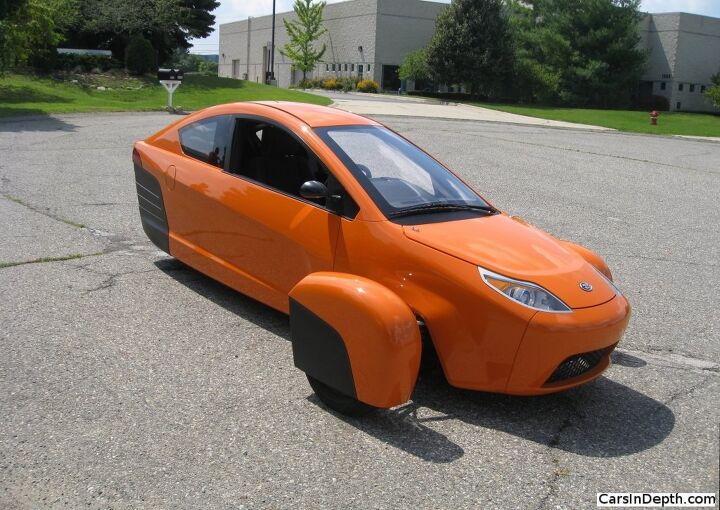




















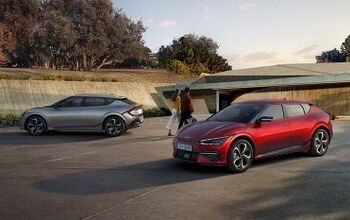

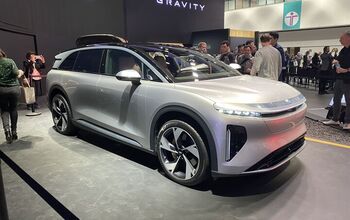






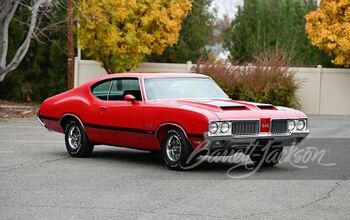

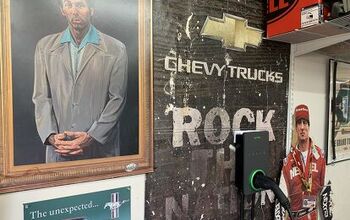
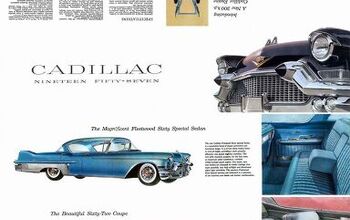
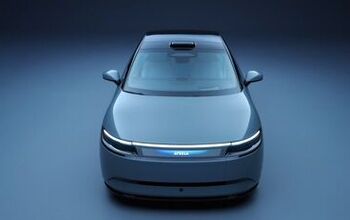
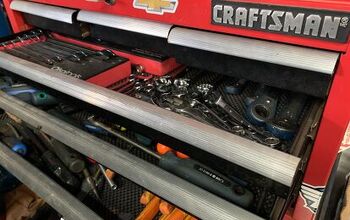

Comments
Join the conversation
What's going to be hilarious if this succeeds is the mad scramble to sell "third cars" by the mainstream brands that it will interfere with. The EV's are coming, a lot are already here, and every company selling them seems willing to loose a ton of money moving them to get those fleet credits. EV mandates (and other similar idiocies, cough, rear view, cough) are why we can't have nice and inexpensive things.
Elio's struggle to gain acceptance is not exceptional, it is Tesla that forms the remarkable exception to the rule. Musk managed to set in motion an ongoing process of publicity, finding people interested in investing in the company and building cars that appeal to a discerning clientele. What started out as wishful thinking to a lot of people became a self-fulfilling vision. Let me put it this way: if Musk had launched Elio Motors, it would have been the stock markets' darling too. Then again, knowing Musk's vision on the car business, he wouldn't have. Although on paper Elio's three-wheeler makes perfect sense, it may well fall through the cracks as an alternative to the small hatchback, simply because it is not that practical, nor that safe.